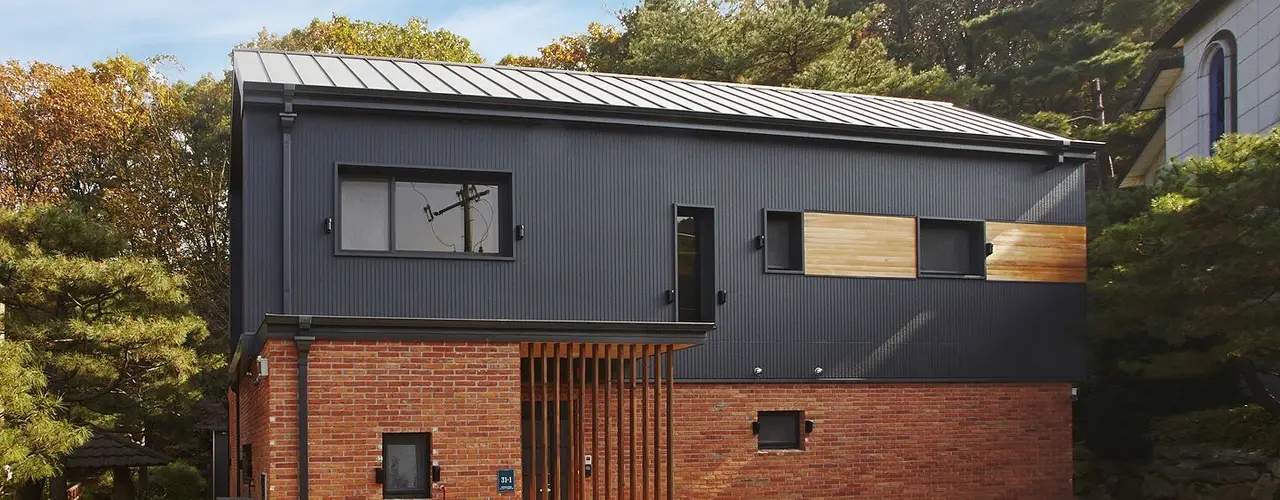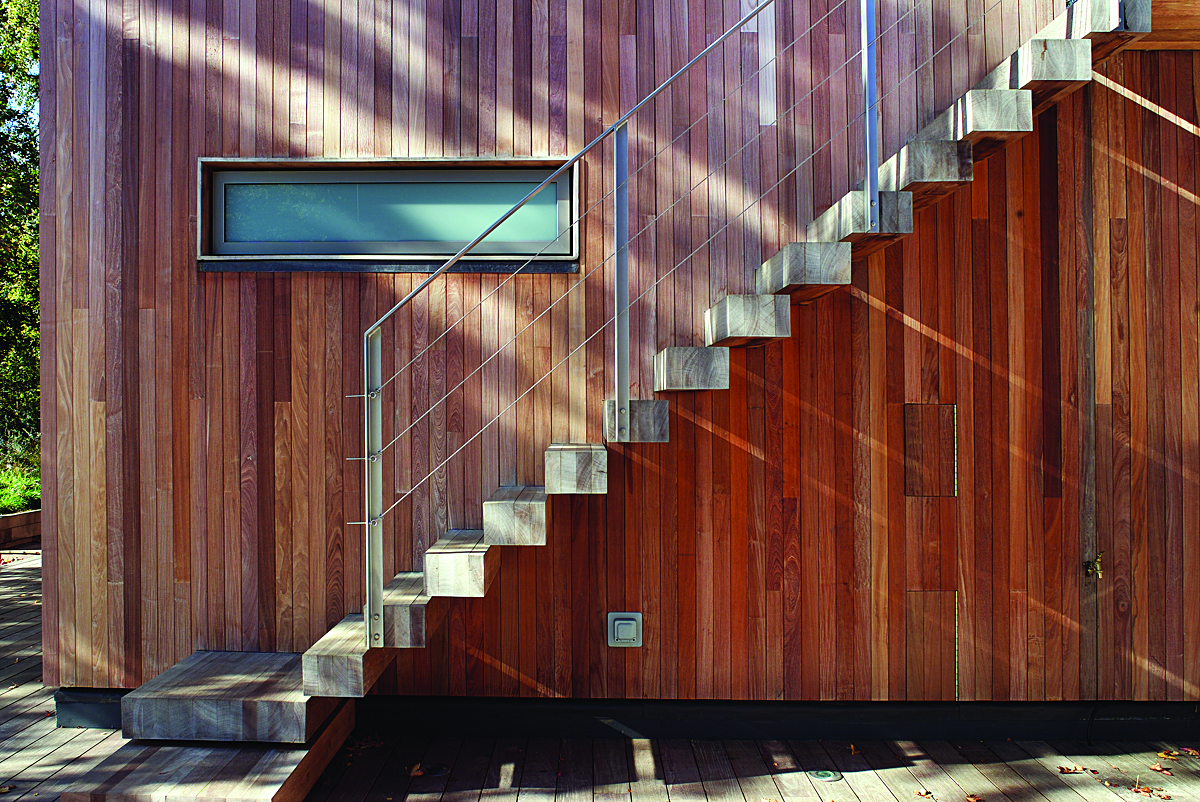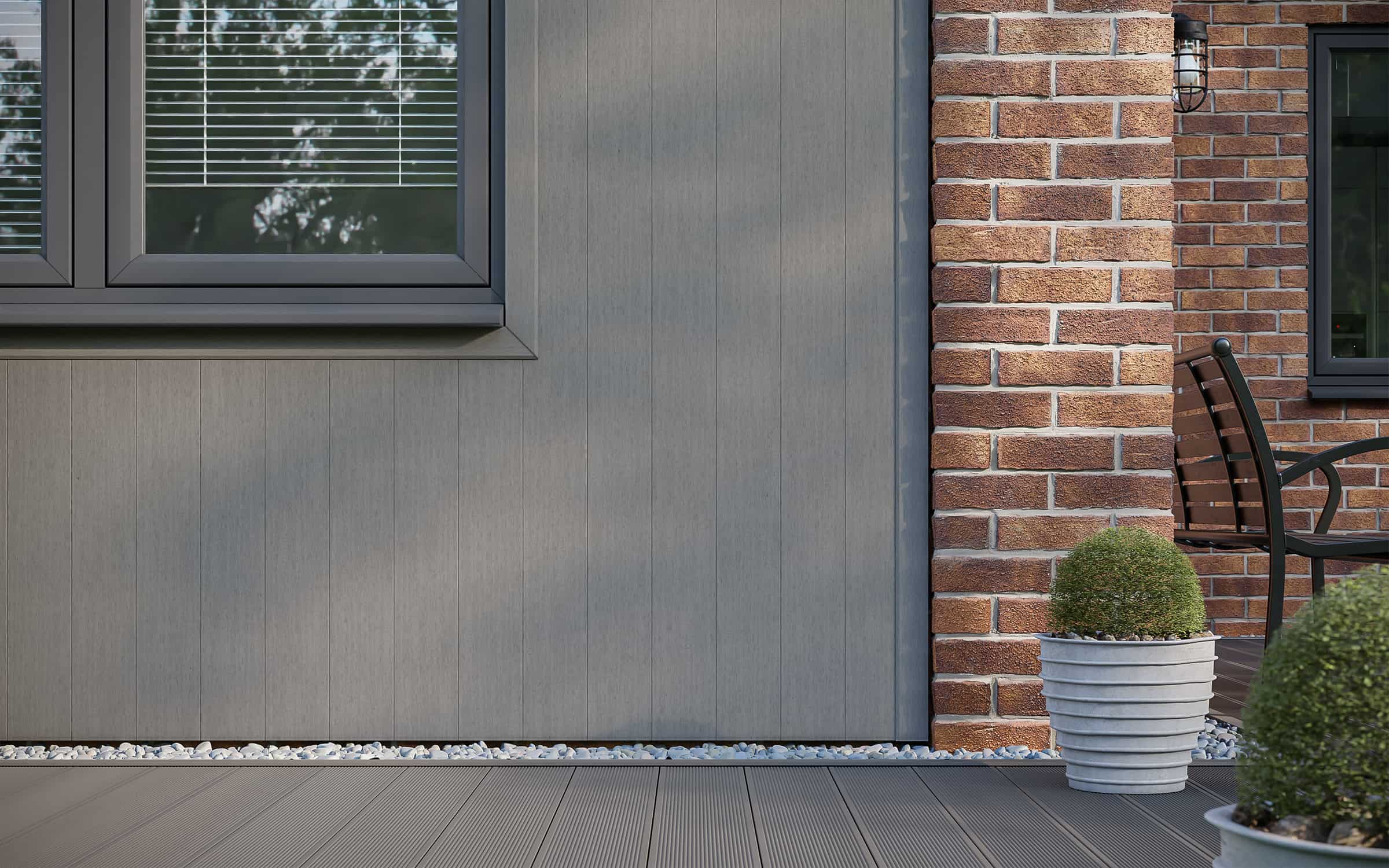Alternative Cladding Value Skin Deep - Revolutionizing Building Exteriors
In the realm of architecture and construction, cladding plays a vital role in enhancing the aesthetic appeal, functionality, and environmental performance of buildings. Traditional cladding materials like concrete, brick, or metal have long dominated the industry. However, in recent years, alternative cladding Value Skin Deep options have emerged, offering innovative solutions that prioritize sustainability, energy efficiency, and design flexibility.
George EvansJul 24, 202321919 Shares296208 Views

In the realm of architecture and construction, cladding plays a vital role in enhancing the aesthetic appeal, functionality, and environmental performance of buildings. Traditional cladding materials like concrete, brick, or metal have long dominated the industry.
However, in recent years, alternative cladding Value Skin Deepoptions have emerged, offering innovative solutions that prioritize sustainability, energy efficiency, and design flexibility.
Cladding
Are you thinking about changing the look of your house or building an addition, such as a garage, garden shed, or sunroom? Then adding outside cladding to the facade of your home might be the way to go. House cladding is an excellent option to update, beautify, or protect the exterior of your home.
Cladding is a dual-purpose exterior finishing technique similar to a skin or an additional non-load-bearing layer. It not only protects the building's interiors from harsh weather conditions, but it also makes the outside decorative and appealing.
The appropriate cladding keeps structures weathertight and cost-effective while also providing thermal insulation and decreasing temperature variance inside the building. It also aids in the improvement of interior acoustics and daylighting.
Cladding materials include wood, masonry, fiber cement, and metal. Newer goods, such as insulated aluminum panels or poly-timber composite boards, may mix numerous elements.
This article explores the concept of alternative cladding, commonly referred to as "Value Skin Deep," and its potential to revolutionize the way we approach building exteriors.
Understanding Value Skin Deep
The concept of "Value Skin Deep" refers to the idea of seeking value beyond the surface level when it comes to building cladding materials. Traditional cladding materials often focus on aesthetics alone, neglecting the broader aspects of sustainability, performance, and environmental impact.
However, with the growing emphasis on sustainable construction practices and energy-efficient buildings, alternative cladding materials have emerged to meet these evolving needs.
Understanding the value that goes beyond the surface of cladding materials is crucial in achieving buildings that are not only visually appealing but also environmentally responsible and high-performing.
Rethinking Cladding Materials
The shift towards alternative cladding materials is driven by the need to reduce the environmental footprint of buildings and enhance their energy efficiency.
Traditional materials like concrete and steel have high embodied carbon, meaning they require substantial energy for extraction, manufacturing, and transportation. As a result, alternative cladding materials that are more sustainable and have lower embodied carbon are gaining traction in the construction industry.
Sustainability In Cladding
Sustainable cladding materials prioritize resource conservation, recyclability, and reduced carbon emissions. Materials like reclaimed wood, recycled metal, and recycled plastic cladding not only minimize the demand for virgin resources but also contribute to waste diversion. Additionally, sustainably sourced materials, such as FSC-certified wood, ensure responsible forestry practices are upheld.
High-Performance Cladding
Beyond aesthetics, high-performance cladding materials are engineered to meet specific functional requirements. These materials excel in areas like thermal insulation, weather resistance, soundproofing, and fire resistance. Incorporating high-performance cladding can enhance a building's energy efficiency, comfort levels, and overall resilience to environmental elements.
Energy-Efficient Façade Systems
Façade systems play a crucial role in a building's energy performance. Energy-efficient façade designs utilize advanced insulation, solar shading, and ventilation strategies to reduce heating and cooling demands. By adopting alternative cladding materials that promote energy efficiency, buildings can achieve substantial energy savings and lower greenhouse gas emissions.
Life Cycle Assessment (LCA)
Conducting a life cycle assessment (LCA) is essential to understand the environmental impact of cladding materials over their entire life cycle. LCAs evaluate factors such as raw material extraction, production, transportation, installation, use, maintenance, and end-of-life considerations. This comprehensive analysis helps in making informed decisions and selecting cladding materials with a lower overall environmental impact.
Embodied Carbon Reduction
Alternative cladding materials often have a lower embodied carbon compared to traditional options. By opting for materials with lower embodied carbon, construction projects can significantly contribute to carbon footprint reduction and support global efforts to combat climate change.
Recyclability And Circular Economy
A key aspect of Value Skin Deep is embracing the circular economy model, which emphasizes designing materials and products with recycling and reusability in mind. Cladding materials that are recyclable or have a long service life contribute to a more circular and sustainable construction industry.
Biophilic Design And Cladding
Biophilic designprinciples focus on integrating natural elements into the built environment to enhance occupants' well-being. Incorporating biophilic elements into cladding, such as green walls or façades with natural textures, fosters a deeper connection with nature and positively impacts occupants' mental and physical health.
Energy Efficiency And Thermal Performance
Energy efficiency and thermal performance are fundamental considerations in building design, and cladding plays a crucial role in achieving these goals. The building envelope, including the cladding system, is the first line of defense against external elements, making it vital to optimize energy consumption and maintain comfortable indoor environments.
Alternative cladding materials offer innovative solutions to enhance energy efficiency and thermal performance, leading to reduced operational costs and a lower environmental impact.
Insulation And Thermal Resistance
One of the primary objectives of alternative cladding materials is to improve insulation and thermal resistance. Traditional cladding materials, such as concrete and metal, can have poor insulation properties, leading to significant heat transfer between the interior and exterior of the building.
In contrast, alternative cladding materials like insulated metal panels, fiber cement, and engineered wood siding offer higher thermal resistance, reducing heat loss during colder months and heat gain during warmer months. Improved insulation contributes to lower heating and cooling demands, resulting in energy savings and increased occupant comfort.
Vapor Permeability And Moisture Management
Proper moisture management is critical to maintaining the integrity of the building envelope and preventing issues such as mold growth and decay.
Alternative cladding materials with appropriate vapor permeability help regulate moisture levels, allowing the building to breathe and expel excess moisture. Vapor-permeable cladding options like permeable fiber cement and natural wood siding promote healthy indoor air quality and extend the lifespan of the building envelope.
Solar Reflectance And Thermal Emittance
Solar reflectance and thermal emittance are essential properties of cladding materials that impact a building's cooling requirements. Cool roofing and cladding systems with high solar reflectance reflect a significant portion of the sun's radiation, preventing heat absorption and keeping the building cooler during hot weather. Additionally, cladding materials with high thermal emittance release absorbed heat efficiently, further contributing to energy efficiency and reduced cooling loads.
Building Integrated Photovoltaics (BIPV)
Alternative cladding materials can be designed to incorporate building-integrated photovoltaics (BIPV), which convert sunlight into electricity. BIPV systems can be integrated into cladding elements like solar panels or transparent photovoltaic glass, allowing buildings to generate clean energy while maintaining aesthetics. This dual functionality enhances energy efficiency and promotes renewable energy adoption, reducing reliance on conventional energy sources.
Environmental Impact And Life Cycle Assessment
Considering the environmental impact of cladding materials throughout their life cycle is essential to make informed decisions and promote sustainability. Life cycle assessment (LCA) is a comprehensive tool used to evaluate the environmental impacts of cladding materials from raw material extraction to disposal. This holistic approach aids in identifying the most sustainable options and minimizing the ecological footprint of the building.
Embodied Carbon And Greenhouse Gas Emissions
The embodied carbon of cladding materials refers to the carbon emissions associated with their entire life cycle. Traditional cladding materials often have high embodied carbon due to energy-intensive manufacturing processes and transportation.
Alternative cladding materials, such as recycled metals, bio-based composites, and natural fibers, have lower embodied carbon, contributing to reduced greenhouse gas emissions and a smaller carbon footprint.
Material Sourcing And Responsible Procurement
The environmental impact of cladding materials is influenced by their sourcing and procurement practices. Alternative cladding materials sourced from responsibly managed forests, recycled materials, or rapidly renewable resources support sustainable forestry practices and resource conservation.
Recyclability And End-of-Life Considerations
The recyclability of cladding materials is crucial to promoting a circular economy, where materials are reused or repurposed at the end of their useful life. Cladding materials that are recyclable or biodegradable help reduce landfill waste and minimize resource depletion. Additionally, considering end-of-life considerations ensures that cladding materials are designed for easy disassembly and recycling, further reducing the environmental impact.
Durability And Longevity
The durability and longevity of cladding materials are critical factors in reducing the overall environmental impact. Alternative cladding materials that have extended lifespans and require minimal maintenance reduce the need for frequent replacements and conserve resources over time.
Energy efficiency and thermal performance are integral aspects of alternative cladding materials, contributing to reduced energy consumption and improved indoor comfort. By selecting cladding materials with high thermal resistance, vapor permeability, and solar reflectance, buildings can achieve enhanced energy efficiency and reduced environmental impact.
Considering the environmental impact of cladding materials through life cycle assessment promotes sustainability and responsible procurement practices. Materials with low embodied carbon, recyclability, and durability align with the principles of a circular economy and contribute to a greener and more sustainable construction industry.
Embracing alternative cladding materials that prioritize energy efficiency, thermal performance, and sustainability ensures that buildings go beyond surface aesthetics and provide long-term value to both occupants and the environment. By understanding the value skin deep, architects and builders can make informed decisions that lead to high-performing, environmentally responsible, and visually appealing buildings.
Design Flexibility And Versatility
One of the key advantages of the Value Skin Deep approach to alternative cladding is the design flexibility and versatility it offers. Traditional cladding materials often come with limitations in terms of shape, size, and visual appearance.
However, alternative cladding Value Skin Deep materials provide architects and designers with a wide range of options to achieve their desired aesthetic while maintaining sustainability and performance objectives.
Alternative cladding materials can be adapted to various architectural styles and design goals, offering creative freedom and customization. They come in different forms, including panels, tiles, or shingles, and can be combined or arranged in innovative patterns to create visually striking facades. This flexibility allows architects to experiment with different textures, colors, and finishes to achieve unique and captivating designs.
Moreover, alternative cladding materials are available in an array of sizes and shapes, enabling architects to create distinctive architectural forms. They can be molded, bent, or cut to specific requirements, allowing for intricate detailing and complex geometries. This flexibility in form opens up opportunities for creative expression and architectural innovation.
People Also Ask
What Is Alternative Cladding In Architecture?
Alternative cladding refers to the use of non-traditional materials for building exteriors, focusing on sustainable, high-performance options that enhance energy efficiency, thermal performance, and design versatility.
What Are Some Examples Of Alternative Cladding Materials?
Examples of alternative cladding materials include wood, fiber cement, composite panels, natural stone, and recycled materials. These materials offer sustainable and visually appealing options for building exteriors.
How Does Alternative Cladding Contribute To Sustainability?
Alternative cladding materials prioritize sustainability through features such as recyclability, use of renewable resources, reduced environmental impact, and improved energy efficiency. They help reduce carbon footprint and enhance the overall sustainability of buildings.
What Are The Advantages Of Value Skin Deep Cladding?
Value Skin Deep cladding offers advantages such as improved thermal performance, energy efficiency, reduced environmental impact, and design flexibility. It allows for the integration of sustainable materials and creative design options while enhancing building performance.
How Does Value Skin Deep Cladding Impact Energy Efficiency?
Value Skin Deep cladding improves energy efficiency by incorporating insulation layers, reducing thermal bridging, and utilizing materials with high thermal performance. It helps minimize energy consumption and create comfortable indoor environments.
Conclusion
Value Skin Deep represents a paradigm shift in cladding design, pushing beyond the surface aesthetics to prioritize sustainability, energy efficiency, and design flexibility. The use of alternative cladding Value Skin Deep materials allows architects and designers to create visually appealing buildings while reducing environmental impacts and improving thermal performance.
By considering sustainable and high-performance materials, focusing on energy efficiency, assessing environmental impacts, and embracing design versatility, Value Skin Deep opens up new possibilities for the future of cladding. Through this approach, buildings can achieve a balance between aesthetics, functionality, and sustainability, contributing to a more sustainable and resilient built environment.
Latest Articles
Popular Articles

